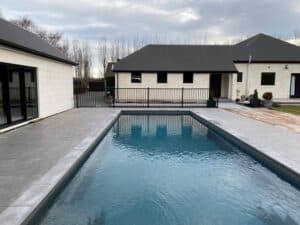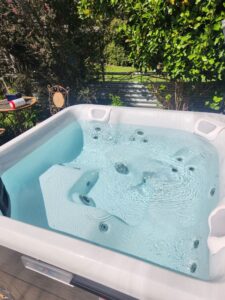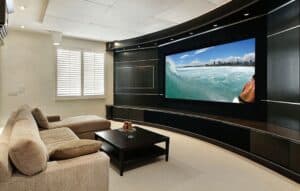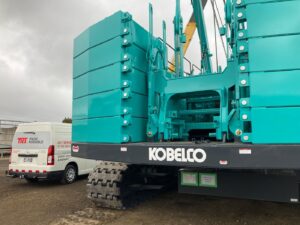Outdoor fireplaces have become increasingly popular as homeowners expand their living spaces into the outdoors. Not only do outdoor fireplaces add a warm ambience to any backyard or patio, but they also serve as focal points for gatherings, providing warmth, enhancing the atmosphere, and potentially increasing property value.
With so many types and styles available, choosing the right outdoor fireplace can be overwhelming. This article will guide you through the key considerations, from selecting the right type and assessing your space to budgeting and understanding safety requirements, to help you make the best choice for your unique outdoor area.
Types of Outdoor Fireplaces
Outdoor fireplaces come in a range of types, each with its own advantages and drawbacks. Deciding which type suits your needs best involves understanding the benefits, limitations, and specific considerations of each option.
a. Wood-Burning Outdoor Fireplaces
Wood-burning fireplaces offer a traditional, rustic feel with the distinct aroma of wood smoke and the crackle of real logs. They’re ideal for larger spaces where smoke and sparks won’t pose a nuisance to nearby structures or neighbours.
However, they require ample fuel storage, frequent maintenance, and adherence to local regulations, as some areas may restrict open wood fires. For a timeless look and an authentic fire experience, wood-burning fireplaces are a great option, but be prepared for ongoing upkeep.
b. Gas Outdoor Fireplaces
Gas fireplaces are a popular choice for their convenience, clean burn, and easy control. They’re available as natural gas or propane models, with natural gas requiring a fixed gas line and propane using a portable tank.
Gas fireplaces provide consistent heat and eliminate the need for cleaning ash or storing wood, making them lower maintenance than wood-burning options. However, installation can be more complex, especially for natural gas models, and they require proper ventilation and regular fuel supply.
c. Electric Outdoor Fireplaces
Electric outdoor fireplaces are straightforward to install and require minimal maintenance. Although they don’t produce as much heat as gas or wood fireplaces, they create a cosy atmosphere with simulated flames. Electric fireplaces are best suited to locations with nearby power sources and may need weatherproofing to protect them from outdoor conditions. If your goal is ambience over warmth, an electric fireplace can be a practical and low-maintenance choice.
d. Ethanol-Burning Outdoor Fireplaces
Ethanol fireplaces are eco-friendly, portable, and smokeless, making them perfect for smaller outdoor spaces, balconies, or areas where a traditional fireplace isn’t feasible. They’re easy to set up and use but don’t produce as much heat as wood or gas fireplaces.
Additionally, you’ll need to ensure a steady supply of ethanol fuel, and these models often have limited burn times. For those seeking a flexible, environmentally friendly fireplace option, ethanol-burning models offer a stylish, portable solution.
Assessing Your Space
Selecting the right outdoor fireplace means considering the physical characteristics of your outdoor area to ensure safety, accessibility, and maximum enjoyment.
a. Space Requirements
Begin by measuring your outdoor area to determine the available space for a fireplace. Clearances from structures, furniture, and landscaping are essential for both safety and comfort. Make sure to account for ample room around the fireplace to accommodate seating and movement and ensure the fireplace won’t overcrowd or overwhelm the area.
b. Location and Placement Options
Decide on the ideal location for your outdoor fireplace. Popular choices include patios, decks, and garden areas, depending on the layout of your space. Consider wind direction, ensuring smoke won’t blow towards seating areas, and place the fireplace near existing seating or dining spots for a comfortable, inviting setup.
Also, think about views and privacy—placing the fireplace in a spot where it enhances the view or provides a sense of seclusion can add to the experience.
c. Local Codes and Regulations
Before making a final decision, check local fire codes and safety regulations. Some areas have restrictions on wood-burning fireplaces, and all fireplaces require a specific clearance from structures and combustible materials. Obtaining any necessary permits early on can help you avoid surprises during installation and ensure compliance with safety standards.

Considering Aesthetic Style and Materials
Your outdoor fireplace should complement your home’s existing style and landscape. The design and materials you choose will play a large role in determining the overall aesthetic and durability.
a. Design Styles to Match Your Space
Outdoor fireplaces come in a range of styles, from traditional to contemporary. Traditional designs often feature stone or brickwork that complements classic or rustic homes, while contemporary designs with sleek metal or concrete finishes work well in modern spaces. Choose a design that enhances the architectural style of your home and reflects your personal taste.
b. Material Options
Popular materials for outdoor fireplaces include stone, brick, metal, and concrete. Each material has unique advantages—stone and brick offer a classic look and are durable, while metal and concrete lend a modern, industrial vibe. Consider the material’s maintenance requirements and longevity in your local climate. Choose materials that harmonise with existing outdoor features, like patios, decks, or furniture, for a cohesive look.
Understanding Functionality and Features
Think about how you plan to use your outdoor fireplace, as this will guide you in choosing the right features and functionality for your needs.
a. Heat Output
Different types of fireplaces produce varying levels of heat. Gas and wood-burning fireplaces generally offer higher BTUs (British Thermal Units), which measure heat output, compared to electric or ethanol options. For chilly climates or those wanting significant warmth, a higher BTU model may be necessary. If you’re in a mild climate and primarily want ambience, a lower heat output may suffice.
b. Additional Features
Outdoor fireplaces can come with extra features like built-in seating, storage for wood, or cooking options. Gas models often offer adjustable flame controls, and some wood-burning models include grill attachments or pizza ovens for versatile use. Consider whether any of these features align with how you plan to enjoy your fireplace.
c. Portable vs. Permanent Installations
Portable fireplaces are ideal for renters or those who might want to rearrange their outdoor space periodically. They’re easier to set up and remove but may not offer the same level of customisation as permanent installations. Permanent fireplaces, however, become a lasting feature of your landscape, adding structure and value to your property.
Budgeting for Your Outdoor Fireplace
Cost considerations are key when planning for an outdoor fireplace. Budgeting not only for the initial purchase but also for installation and long-term maintenance can help you make a choice that fits your finances.
a. Initial Purchase and Installation Costs
The cost of outdoor fireplaces varies widely based on type, size, and materials. Wood-burning fireplaces typically range from moderate to high prices depending on materials, while gas and electric models vary depending on the complexity of installation. Factor in installation costs, which can be higher for gas models requiring professional setup.
b. Long-Term Maintenance Costs
Wood-burning fireplaces often require more maintenance and fuel storage, while gas fireplaces have ongoing fuel costs. Electric and ethanol models are lower maintenance but may have electricity or fuel costs over time. Account for these costs in your budget to ensure long-term affordability.
c. Value and ROI Considerations
A quality outdoor fireplace can add value to your property, enhancing its appeal to future buyers. Balancing your investment with intended use and potential resale value can make the addition more worthwhile.
Safety and Maintenance Tips
Ensuring the safety and longevity of your outdoor fireplace is crucial. Follow these tips to keep your fireplace in good working order.
a. Safety Measures
Set up the fireplace with safe distances from any structures, trees, or overhanging branches. Use fire screens or spark guards with wood-burning models, and install carbon monoxide detectors near gas models. Following safety guidelines protects your family and property.
b. Maintenance and Cleaning
Regular cleaning and maintenance are essential for all types of fireplaces. Wood-burning models need ash removal, gas models benefit from periodic inspections, and electric fireplaces should be protected from weather damage. Seasonal maintenance, like winterising or rainproofing, will keep your fireplace in top condition.
Enhance Your Living Space
Choosing the right outdoor fireplace involves a thoughtful balance of factors, from space considerations and style to functionality and budget. By assessing your outdoor area, deciding on the best type and materials, and planning for safety and maintenance, you can make an informed decision that enhances your outdoor living experience.
A well-chosen outdoor fireplace will bring warmth, ambience, and value to your space, becoming a cherished part of your home for years to come.
Have you read these articles?
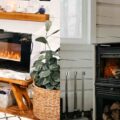 Wood vs Gas Fireplaces: Which Is Best for Your New Hamilton Home?
Wood vs Gas Fireplaces: Which Is Best for Your New Hamilton Home?
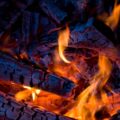 Why New Homeowners Should Choose A Double-Sided Wood Fireplace
Why New Homeowners Should Choose A Double-Sided Wood Fireplace
 How to Choose a Fireplace That Blends Function and Style
How to Choose a Fireplace That Blends Function and Style
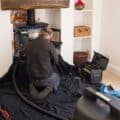 Fireplace Problems In Wellington? Signs You Need Urgent Repairs
Fireplace Problems In Wellington? Signs You Need Urgent Repairs
 This Is the Costly Mistake Wellingtonians Make With Failing Fireplaces
This Is the Costly Mistake Wellingtonians Make With Failing Fireplaces

